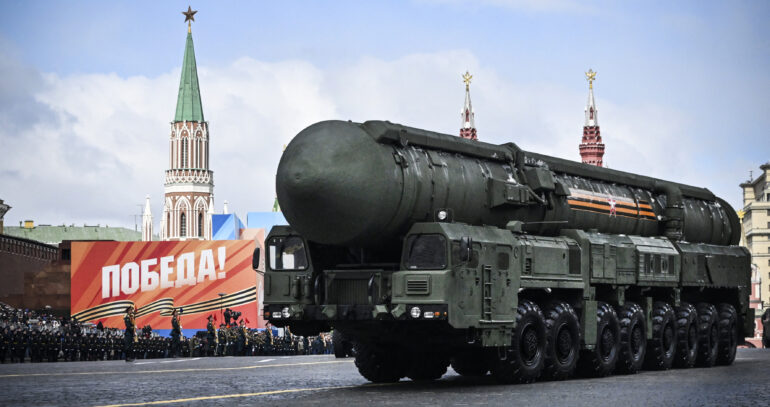In a move that has sent shockwaves through global security circles, Russia announced on August 4, 2025, that it will no longer honor its self-imposed restrictions on deploying intermediate- and shorter-range missiles. This decision, which could escalate tensions between nuclear powers, comes as a response to what Moscow calls provocative U.S. and NATO military actions near its borders and in the Asia-Pacific region. The shift marks a dangerous new chapter in the already strained relationship between Russia and the West, raising fears of a potential arms race reminiscent of the Cold War.
The Collapse of the INF Treaty and Russia’s Response
The Intermediate-Range Nuclear Forces (INF) Treaty, signed in 1987 by the U.S. and the Soviet Union, banned ground-based missiles with ranges between 500 and 5,500 kilometers. These weapons were seen as particularly destabilizing because their short flight times left little room for decision-making, increasing the risk of miscalculations that could lead to nuclear conflict. The treaty was a cornerstone of arms control until 2019, when the U.S. withdrew, accusing Russia of violating its terms—a charge Moscow denied. In response, Russia maintained a unilateral moratorium, promising not to deploy such missiles unless the U.S. or its allies did so first.
However, Russia’s Foreign Ministry declared on August 4, 2025, that the conditions for maintaining this moratorium “no longer exist.” The ministry pointed to the U.S. deployment of missile systems like the Typhon and Dark Eagle hypersonic missiles in countries such as Denmark, the Philippines, and Australia, as well as the use of Precision Strike Missiles (PrSM) in military exercises in the Republic of Palau. These actions, Moscow claims, violate the spirit of the defunct INF Treaty and pose a “direct, strategic threat” to Russia’s security.
Escalating Tensions and Nuclear Posturing
The Kremlin’s decision follows a series of provocative moves by both sides. On July 31, 2025, U.S. President Donald Trump announced the repositioning of two nuclear-armed submarines closer to Russia, citing “highly provocative statements” from Dmitry Medvedev, Russia’s former president and current deputy chairman of the Russian Security Council. Medvedev, known for his hawkish rhetoric, described Russia’s withdrawal from the moratorium as a “result of NATO countries’ anti-Russian policy” and warned of “further steps” to come. While specifics remain unclear, analysts speculate that Russia may deploy its new Oreshnik missile—a weapon capable of carrying both conventional and nuclear warheads—in regions like Kaliningrad or Belarus.
The Oreshnik missile, which Russia first used against Ukraine in November 2024, is particularly concerning. Russian President Vladimir Putin has claimed it can travel at speeds up to Mach 10, making it nearly impossible to intercept, and its multiple warheads could cause devastation comparable to a nuclear strike even in conventional use. Putin has warned that Moscow could target NATO countries supporting Ukraine’s use of long-range missiles against Russia, further escalating the stakes.
A Broader Context of Conflict
The missile controversy is just one facet of the growing rift between Russia and the West. Russia’s invasion of Ukraine in 2022 has been a major flashpoint, with the U.S. leading efforts to impose severe economic sanctions on Moscow. Tensions have also been fueled by allegations of Russian cyberattacks, election interference, and support for authoritarian regimes in countries like Syria and Venezuela. Meanwhile, Russia views NATO’s eastward expansion since the Soviet Union’s collapse as a betrayal and a threat to its security.
The timing of Russia’s announcement is particularly significant. Trump has set a deadline of August 8, 2025, for Russia to agree to a ceasefire in Ukraine, threatening new sanctions on Russia and its oil buyers, including China and India, if no deal is reached. Putin, however, has signaled no intention of backing down, claiming Russia has the upper hand in the conflict.
Global Implications and the Risk of a New Arms Race
Russia’s decision to abandon its missile moratorium has raised alarms about a potential new arms race. The deployment of intermediate-range missiles by both Russia and the U.S. could destabilize regions like Europe and the Asia-Pacific, where tensions are already high. The short flight times of these missiles reduce the window for diplomacy or error correction, increasing the risk of catastrophic miscalculations. As the Russian Foreign Ministry warned, these developments have “serious negative implications for regional and global stability.”
Kremlin spokesman Dmitry Peskov emphasized that Russia now considers itself “no longer constrained” and reserves the right to deploy missiles near its borders if provoked. Meanwhile, U.S. officials have defended their actions as necessary for “strategic deterrence,” pointing to Russia’s aggressive posture and violations of international norms.
A Call for Caution
As nuclear rhetoric intensifies, both sides have been urged to exercise restraint. Peskov cautioned against inflammatory language, stating, “Everyone should be very, very careful with nuclear rhetoric.” Yet, with neither side showing willingness to de-escalate, the world watches anxiously as the specter of a new missile crisis looms.
The collapse of the INF Treaty and the end of Russia’s moratorium signal a troubling shift in global security dynamics. As Russia and the U.S. flex their military might, the international community faces a critical question: Can diplomacy prevail, or are we on the brink of a new era of nuclear brinkmanship? For now, the answers remain uncertain, but the consequences of failure could be catastrophic.
